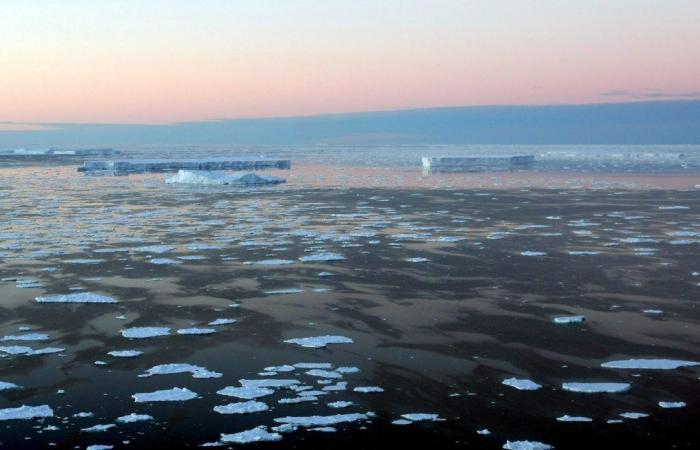Madrid.- Using artificial intelligence techniques, a team of scientists has discovered that at the height of the Antarctic summer, in January, more than half (57%) of all meltwater from the Antarctic ice shelves is It remains in the form of slush (water-soaked snow).
This melting, which until now had not been quantified and is not taken into account in climate models, can profoundly affect the stability of ice shelves and accelerate the rise in sea level, warns the study, led by the University of Cambridge (United Kingdom).
Each summer, as the climate warms, water builds up on the surface of Antarctica’s floating ice shelves.
Previous research has shown that surface lakes of meltwater can contribute to the fracturing and collapse of ice shelves, because the weight of the water can cause the ice to break up, but the role of meltwater in ice shelf stability is more difficult to determine.
“We can use satellite images to map meltwater lakes in much of Antarctica, but sleet is difficult to map because it looks like other things, such as cloud shadows, when viewed from a satellite,” explains lead author Rebecca Dell of the Scott Polar Research Institute (SPRI) in Cambridge.
However, using machine learning techniques, “we can go beyond what the human eye can see and get a clearer picture of how sleet could be affecting the ice in Antarctica,” Dell says.
Satellite data
Using optical data from NASA’s Landsat 8 satellite, the team, along with researchers from the University of Colorado Boulder (United States) and the University of Delft (Netherlands), trained a machine learning model to obtain monthly records of sleet and lakes. of meltwater across 57 Antarctic ice shelves between 2013 and 2021.
They found that at the height of the Antarctic summer, more than half (57%) of the meltwater on Antarctic ice shelves remains as slush, with the remaining 43% being meltwater.
“This meltwater has never been mapped on a large scale across all of Antarctica’s large ice shelves, so more than half of all surface meltwater has been ignored until now,” Dell says.
Platform stability
Meltwater affects the stability of floating ice shelves that line the Antarctic coast.
As the climate warms and melt rates increase in Antarctica, meltwater — either in the form of lakes or meltwater — can seep into and fracture ice cracks, potentially leading to the collapse of vulnerable ice shelves, which in turn would cause ice from inland glaciers to spill into the ocean and contribute to sea level rise.
“Since sleet is more solid than meltwater, it won’t cause hydrofracturing in the same way as lake water, but it’s something we need to take into account when predicting whether ice shelves will collapse or not.” ” says Ian Willis, co-author of the study at the University of Cambridge.
Furthermore, it also has a great effect on melting rates. Because sleet and lakes are less white than snow or ice, they absorb more heat from the sun, causing more snowmelt.
This additional melting is not accounted for in climate models, which can lead to underestimations of ice sheet melt projections and ice shelf stability.
“In the future, places in Antarctica that currently have no water or slush are likely to begin to change. As the climate continues to warm, more melting will occur, which could have implications for ice stability and increased of sea level,” concludes Willis. EFEverde
ecg/crf






